Notes
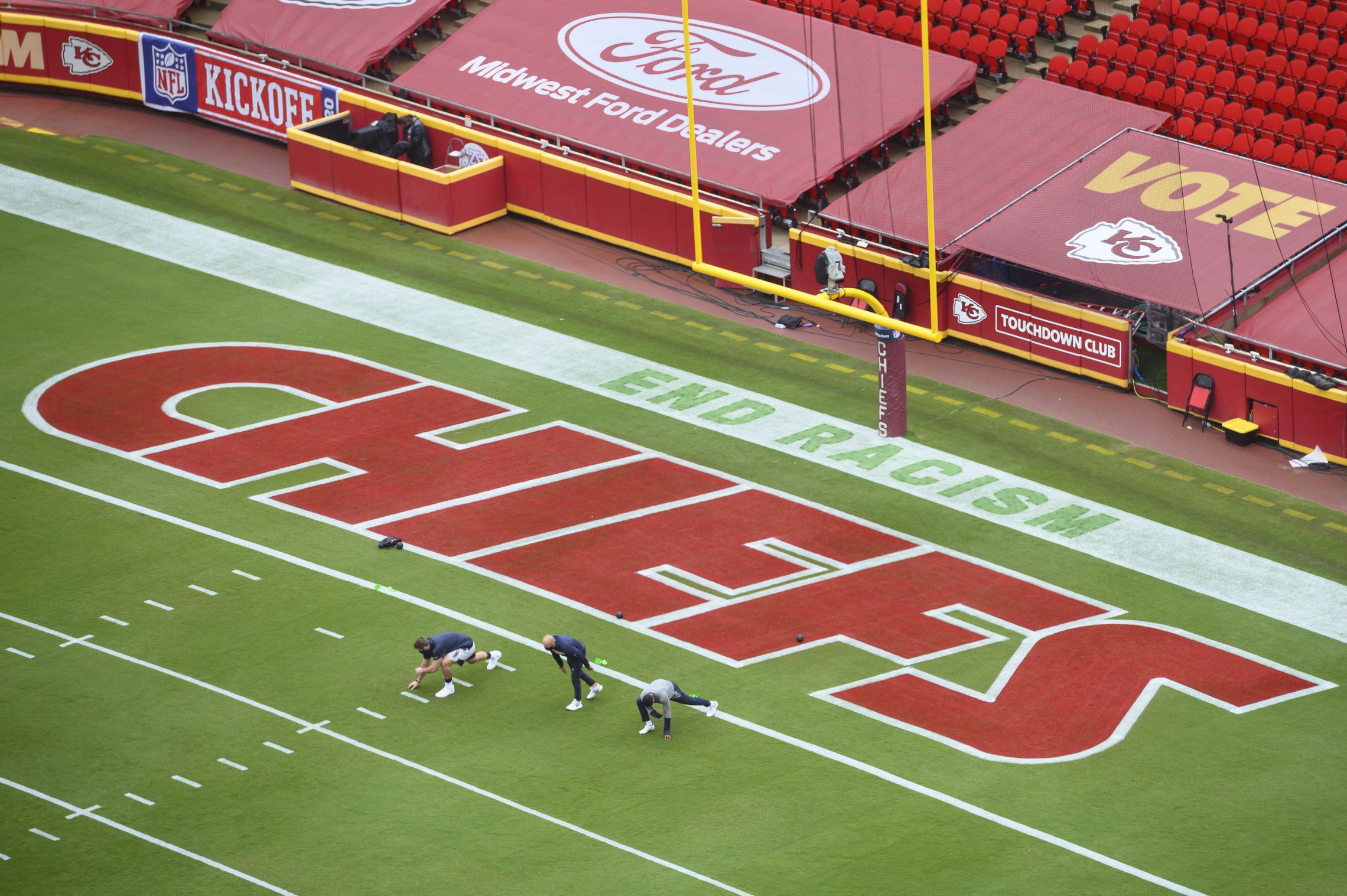
Photo: Reed Hoffmann/Associated Press Caption: Members of the Houston Texans stretch near a social justice sign in the end zone prior to their NFL football game against the Kansas City Chiefs, Thursday, Sept. 10, 2020, in Kansas City, Mo. (AP Photo/Reed Hoffmann)
Social Justice in the “Unified” NFL
If the NFL really wanted to promote anti-racism, it couldn’t make a less emphatic visual statement.
By Michael Butterworth
At the beginning of its 2020 season, the NFL found itself responding to a national reckoning with racial injustice. Like other sports leagues trying to navigate both the coronavirus pandemic and concerns about systematic racism, the NFL opened its season with symbolic gestures designed to express solidarity with the Black community. Not unlike its responses to protest and conversations about racial violence in 2016 and 2017, the league has been leaning heavily on abstract notions of “unity.” Their approach has found expression in statements by NFL Commissioner Roger Goodell and in its decisions to feature Black culture and narratives.
We also see the league’s approach to “unity” in visual strategies that have been captured by photojournalists.
Take for example the photograph above from the season’s opening game between the Houston Texans and defending Super Bowl champion Kansas City Chiefs.
This photo is dominated by the word “CHIEFS” painted in the end zone. There is a standard practice in professional football to promote franchise insignia this way, so by itself it is unremarkable. Look more closely, however, and we see the NFL’s call to “END RACISM” placed along the back of the end zone. The NFL had declared before the season started that it would add this label, but that decision received a lukewarm response. The field design confirms why many observers would be skeptical, as the phrase blends into the field enough to make it only somewhat legible. Since it is far less prominent than “CHIEFS,” it reads with as little impact as critics feared. If the NFL really wants to promote anti-racism, it seems difficult to imagine a less emphatic visual statement.
The league’s message is undermined even further by the prominence of a team name that appropriates Native American culture and imagery. Even though Washington’s former mascot attracted a lot of media attention (the franchise now playing under the placeholder, “the Washington football team”), Kansas City has a fan base that still mimics in its costumes and chants the traditions of Native American culture.
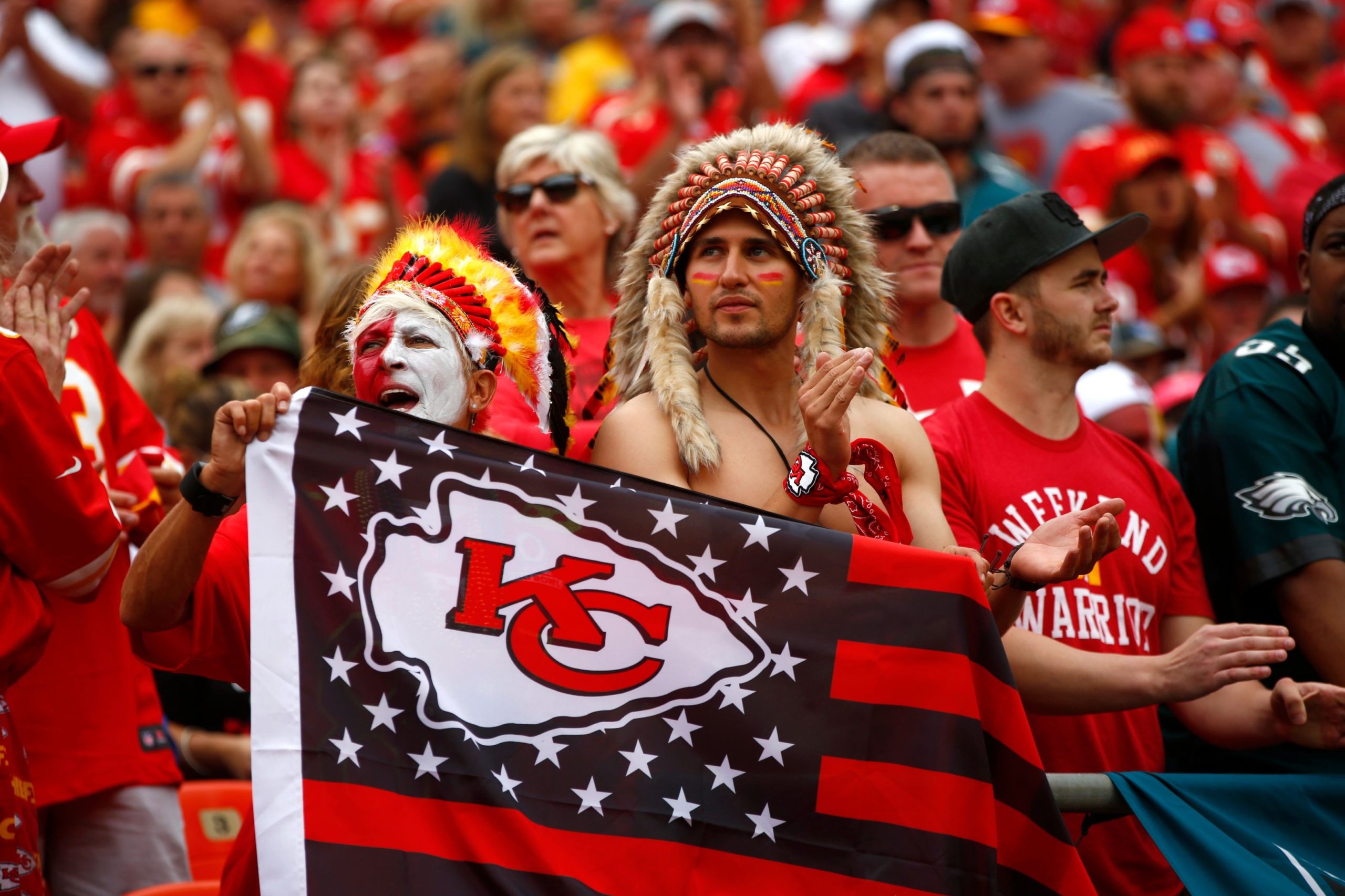
Caption: Native American communities and allies are speaking out against the NFL’s decision to allow Kansas City Chiefs fans to attend the Super Bowl wearing mock headdresses, face paint and performing the so-called “tomahawk chop” chant.
Such a stark visual juxtaposition of “CHIEFS” and “END RACISM” suggests the NFL’s commitment to racial justice is variable at best and a public relations gambit at worst.
The photo also implores us to “VOTE.” Where “END RACISM” is empty because it is visually underwhelming, then “VOTE” – down there in the the same row with corporate sponsorship ads — fails as well for being more gestural. It suggests that the NFL’s default position is to promote “unity” without any commitment to values or goals that actually unify people. In this way the signage fetishizes the perception that voting is a noble end regardless of what people are voting for.
Other photographs capture the NFL’s approach to “unity.” The photograph below shows members of the San Diego Chargers and Cincinnati Bengals standing at attention, arms interlocking in a display of mutual support.
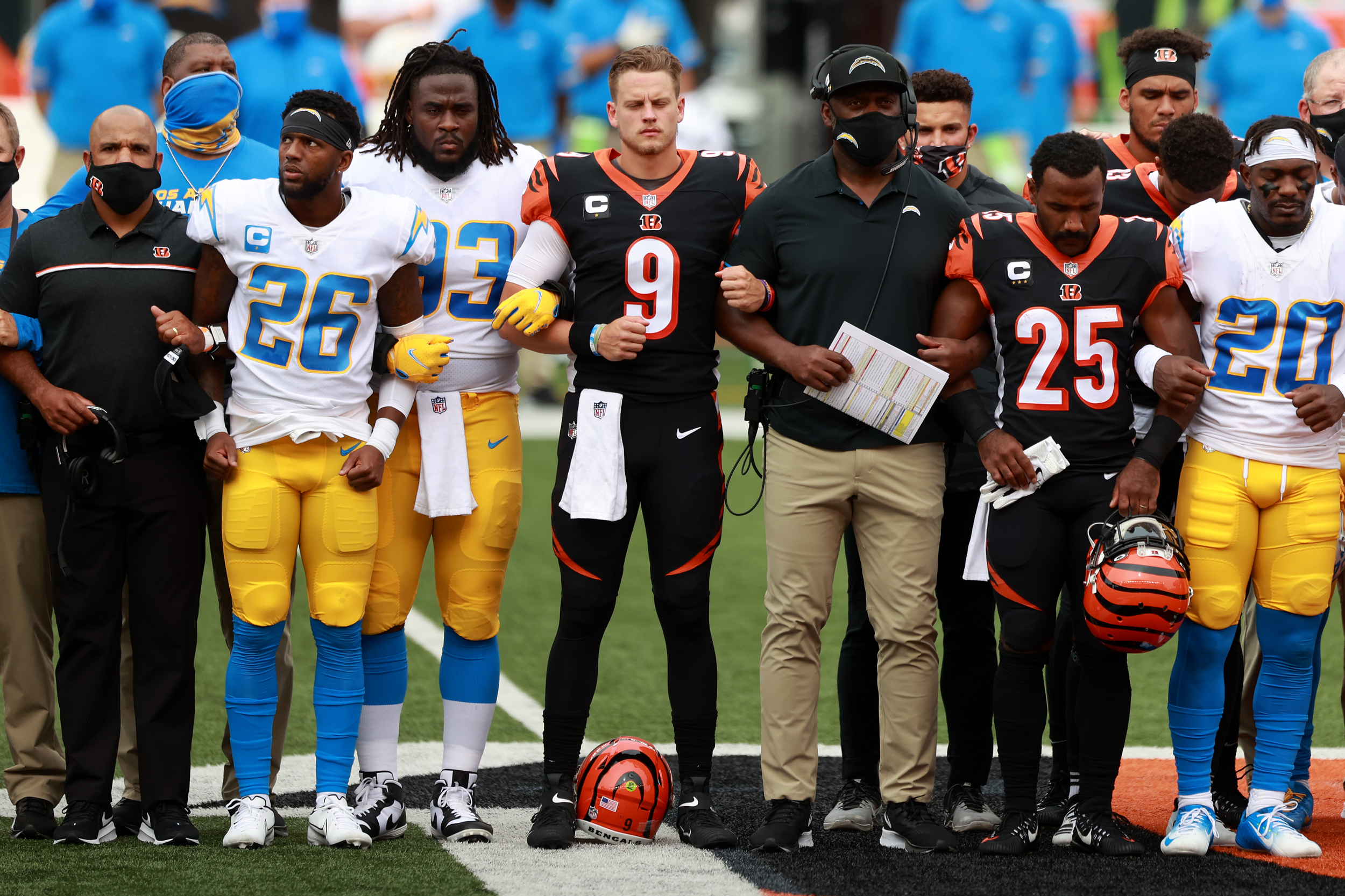
Caption: Quarterback Joe Burrow #9 of the Cincinnati Bengals, teammates and the Los Angeles Chargers stand in unity during the U.S. National Anthem at Paul Brown Stadium on September 13, 2020 in Cincinnati, Ohio. The NFL began their 2020 season and the Bengals didn't allow fans in attendance due to the Covid-19 pandemic.
Dating back to demonstrations in 2017, this has been the league’s primary strategy: a symbolic show of players arm in arm — both Black and white — presumably communicating our capability to transcend racial division. But during a moment when Black pain is being centered in the national conversation, this image instead centers Bengals quarterback Joe Burrow, who is white.
The interest in Burrow makes sense, given his historic Heisman Trophy winning campaign last year and his status as the first pick in the 2020 NFL Draft. He also has made several public statements in support of the Black Lives Matter movement. Nevertheless, it makes little sense to orient viewers to Burrow as the focal point in this photo. In doing so, the calls for justice made by and on behalf of Black citizens are subordinated to the empathy and unity authorized by white voices and faces.
A final image shows Chicago Bears wide receiver Anthony Miller prior to the game against the Detroit Lions. Miller kneels in quiet reflection, in what could be prayer or anguish over the gravity of the circumstances beyond the stadium. He has chosen to kneel in the middle of the league’s sanctioned message, “END RACISM,” which seems unlikely to be accidental. Yet, it is unclear if Miller has done so as an endorsement of the slogan or an indictment of it is empty symbolism.
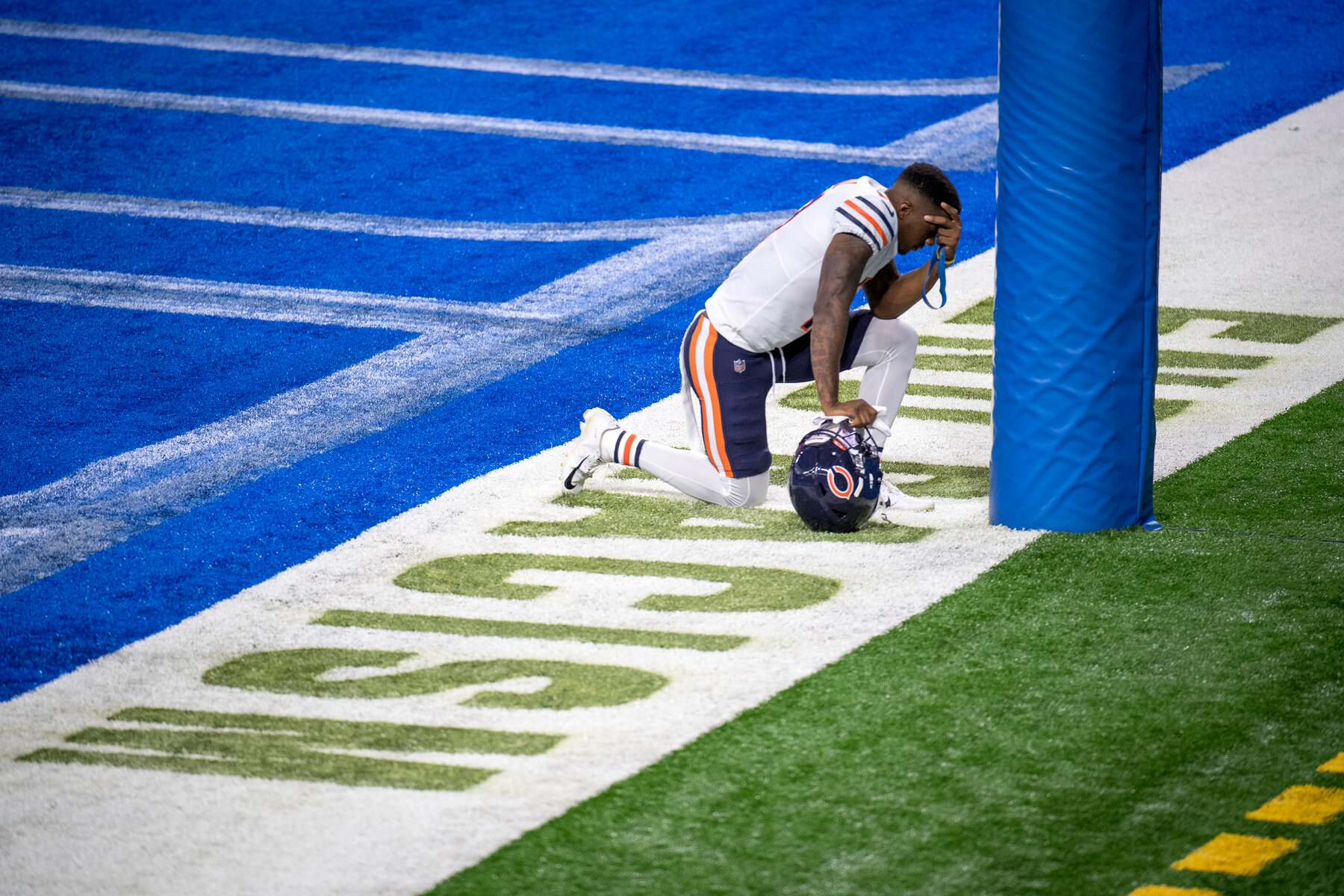
Caption: Anthony Miller #17 of the Chicago Bears kneels in the end zone before the game against the Detroit Lions at Ford Field on September 13, 2020 in Detroit, Michigan.
As a white man in the United States, I myself am unable to grasp fully the burden that Black athletes carry in this moment. My own reading of this image, then, is necessarily limited. But I can’t help but see it as a symbol of that burden — as though Miller’s pose of reflection, with his hand providing support to his forehead, is an embodiment of all that these men (and, in other sports, women) have internalized over months, years, and decades. Still, it remains an ambivalent image. It reads as much as a lament of the NFL’s empty symbolism as a plea for empathy and grace.
Read together, these images help us visualize the opposite of their stated intent. By spotlighting the NFL’s inconsistent message about racism, centering the emotions of white athletes, and highlighting the isolation produced by current circumstances, these photos communicate the disunity and fragmentation that characterizes political culture in the United States. In short, they remind us that calls for social justice remain limited when operating within the symbolic space of the NFL.
Dr. Michael L. Butterworth is the Director of the Center for Sports Communication & Media, the Governor Ann W. Richards Chair for the Texas Program in Sports and Media, and Professor in the Department of Communication Studies at the University of Texas, Austin.
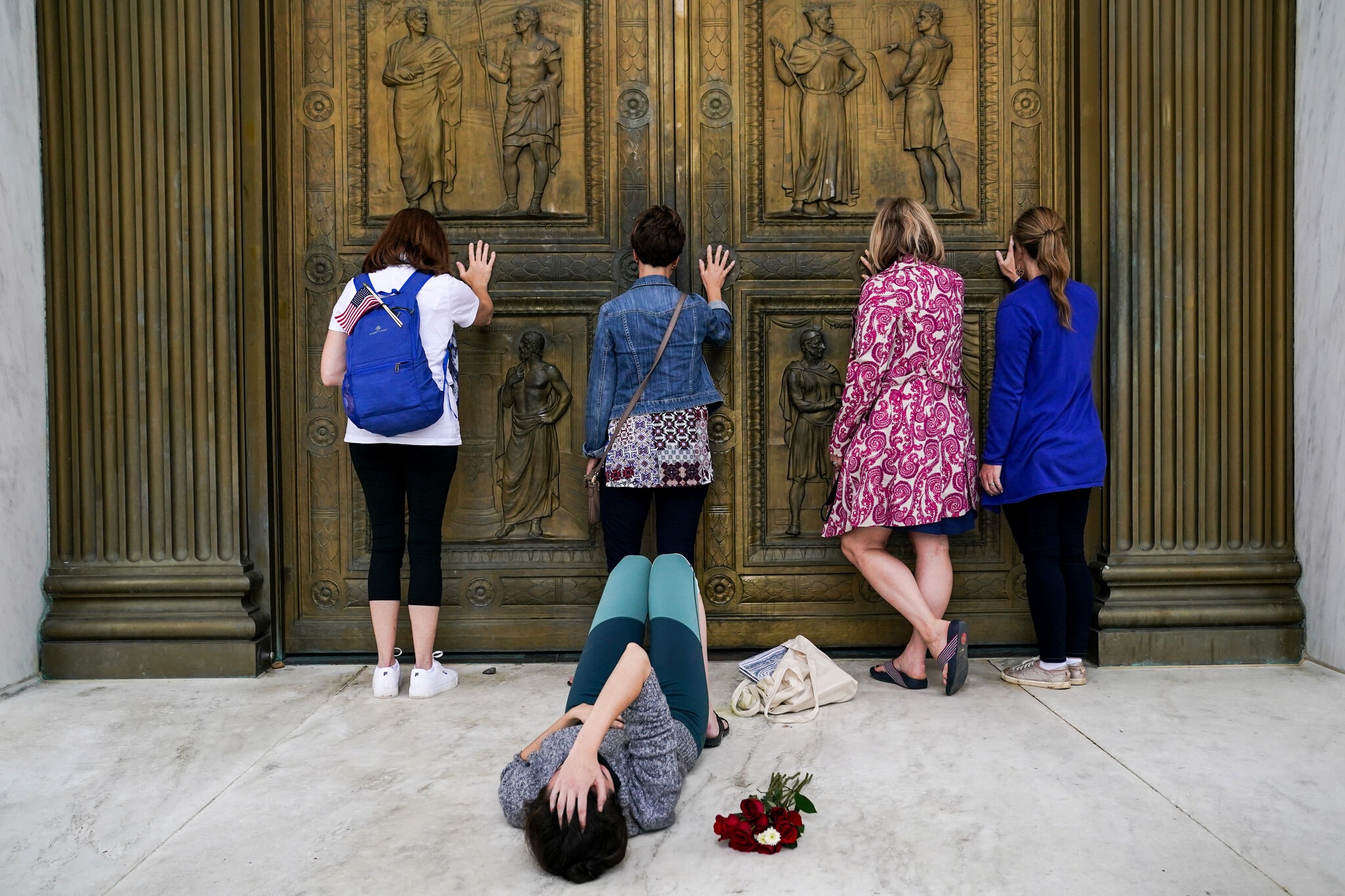
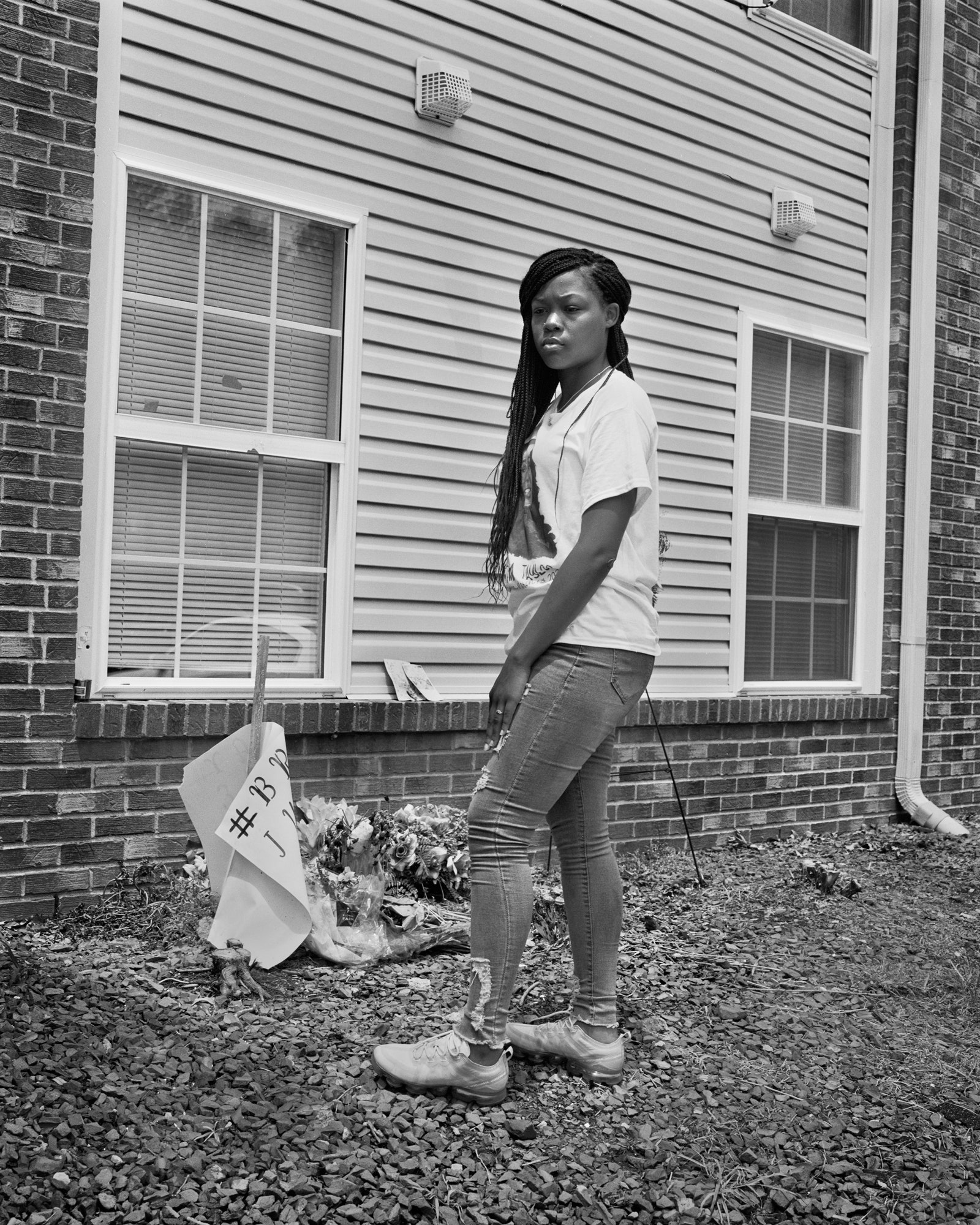
Reactions
Comments Powered by Disqus